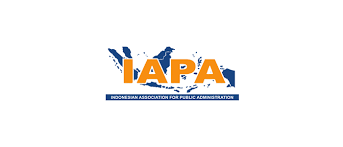Deaf Student and Mental Act in Mathematics Problem Solving
Abstract
Mathematics has an important role in the cognitive development of deaf students. Through learning mathematics in schools, deaf students will explore and build knowledge, because literally mathematics is the parent of knowledge and human activities. One important aspect in learning mathematics is the ability to solve problems. Problem solving means engaging in a task for which the solution method is not known in advance. In order to find a solution, students must draw on their knowledge, and through this process, they will often develop new mathematical understandings.This study aims to analyze the mental act of deaf students in solving mathematical problems in fraction material. Respondents of 20 students were randomly selected from 3 special schools. This type of research is qualitative with a case study design. Data was collected through the instrument of problem solving abilities, interviews, and observations. Data were analyzed using grouded theory. The results of this study indicate that the mental act used by deaf students in solving mathematical problems is interpreting, explaining, inferring, and problem solving.
References
Creswell. J. W. (2012). Educational Research. 4th edn. New York: Pearson.
Fennema, E. and A. Romberg, T. (1999). Mathematics Classrooms: That Promote Understanding. New Jersey: Lawrence Erlbaum Associates.
Gall, MD and Borg, WR. (2003). Educational Research. 7th edn. New York: Allyn and Bacon, L.Td.
Harel, G. (2008). What is Mathematics? A Pedagogical Answer to a Philosophical Question., Proof and Other Dilemmas: Mathematics and Philosophy ed B Gold and R. Simons. Washington, DC: MAA.
Maccini, P., Mulcahy, C. A., & Wilson, M. G. (2007). A follow-up of mathematics interventions for secondary students with learning disabilities. Learning Disabilities Research & Practice, 22 (1), 58–74.
Leong, Y. H., Ho, W. K., & Cheng, L. P. (2015). Concrete-Pictorial-Abstract: Surveying its origins and charting its future. The Mathematics Educator, 16(1), 1-18.
Luckner, J., Bowen, S. and Carter, K. (2001). Visual Teaching Strategies: for students who are hard and hard hearing, Teaching Exceptional Children, 33 (3), pp. 38–44.
Marschark, M., & Everhart, V. (1999). Problem-solving by deaf and hearing students: Twenty questions. Deafness and Education International, 1, 65–82.
NCTM .(2000). principles and standards for school mathematics. National Cauncil of Teacher and Mathematics.
Pagliaro, CM. (1998). Mathematics Preparation and Professional Development of Deaf Education Teachers, American Annals of the Deaf, 143 (5), pp. 373–379. doi: 10.1353 / aad.2012.0137.
Pagliaro, CM and Kritzer, KL. (2013). The Math Gap: A Description of the Mathematics Performance of Preschool-aged Deaf / Hard-of-Hearing Children, Journal of Deaf Studies and Deaf Education, 18 (2), pp. 139–157.
VanDerHeyden, A. M., & Witt, J. C. (2005). Quantifying the context of assessment: Capturing the effect of base rates of teacher referral and a problem solving model of identification. School Psychology Review, 34, 161–183.
Witzel, B.S. (2005). Using CRA to Teach Algebra to Students with Math Difficulties in Inclusive Settings. Learning Disabilities: A Contemporary Journal, 3(3), 49-60.
Copyright (c) 2020 Indonesian Journal of Social Research (IJSR)

This work is licensed under a Creative Commons Attribution-ShareAlike 4.0 International License.
The Authors submitting a manuscript do so on the understanding that if accepted for publication, copyright publishing of the article shall be assigned/transferred to Indonesian Journal of Social Research (IJSR) Universitas Djuanda as Publisher of the journal. Upon acceptance of an article, authors will be asked to complete a 'Copyright Transfer Agreement'. An e-mail will be sent to the corresponding author confirming receipt of the manuscript together with a 'Copyright Transfer Agreement' form by online version of this agreement.
Indonesian Journal of Social Research (IJSR) Universitas Djuanda, the Editors and the Editorial Board make every effort to ensure that no wrong or misleading data, opinions or statements be published in the journal. In any way, the contents of the articles and advertisements published in the Indonesian Journal of Social Research (IJSR) Universitas Djuanda are sole and exclusive responsibility of their respective authors and advertisers.
Remember, even though we ask for a transfer of copyright, our journal authors retain (or are granted back) significant scholarly rights as mention before.
The Copyright Transfer Agreement (CTA) Form can be downloaded here: Copyright Transfer Agreement-IJSR 2020
The copyright form should be signed electronically and send to the Editorial Office e-mail below:
Dr. Rasmitadila, M.Pd (Editor-in-Chief)
Universitas Djuanda
Jl. Tol Jagorawi No.1, Ciawi, Kec. Ciawi, Bogor, Jawa Barat 16720
Website: http://journal.unida.ac.id/index.php/IJSR/index
Email: ijsr@unida.ac.id





4.png)



